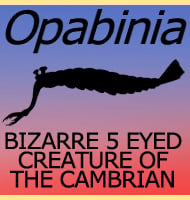Hurdia
In Depth Hurdia is one of the best recognised of all the anomalocaridid genera, thanks mostly to the large number of specimens that have been found. The feature that makes Hurdia really stand out is the enlarged head that has puzzled many researchers to its purpose. There is no need for such a feature in … Read more



